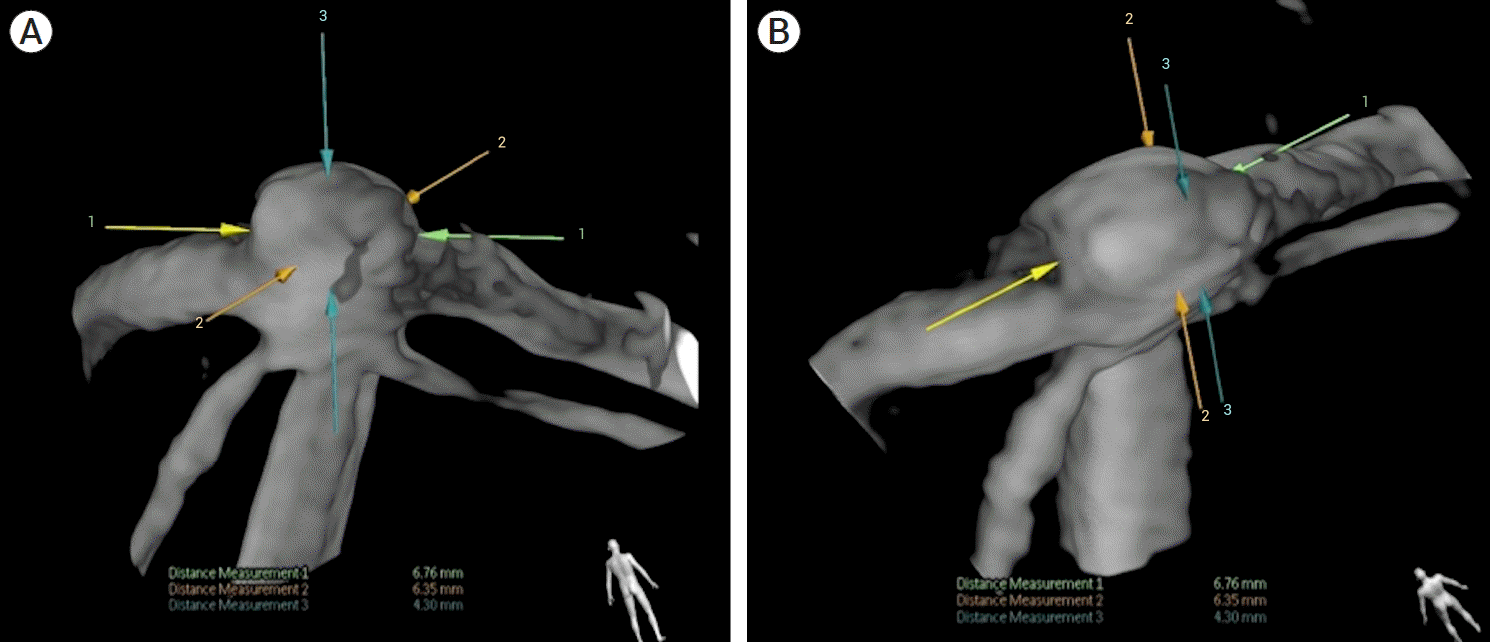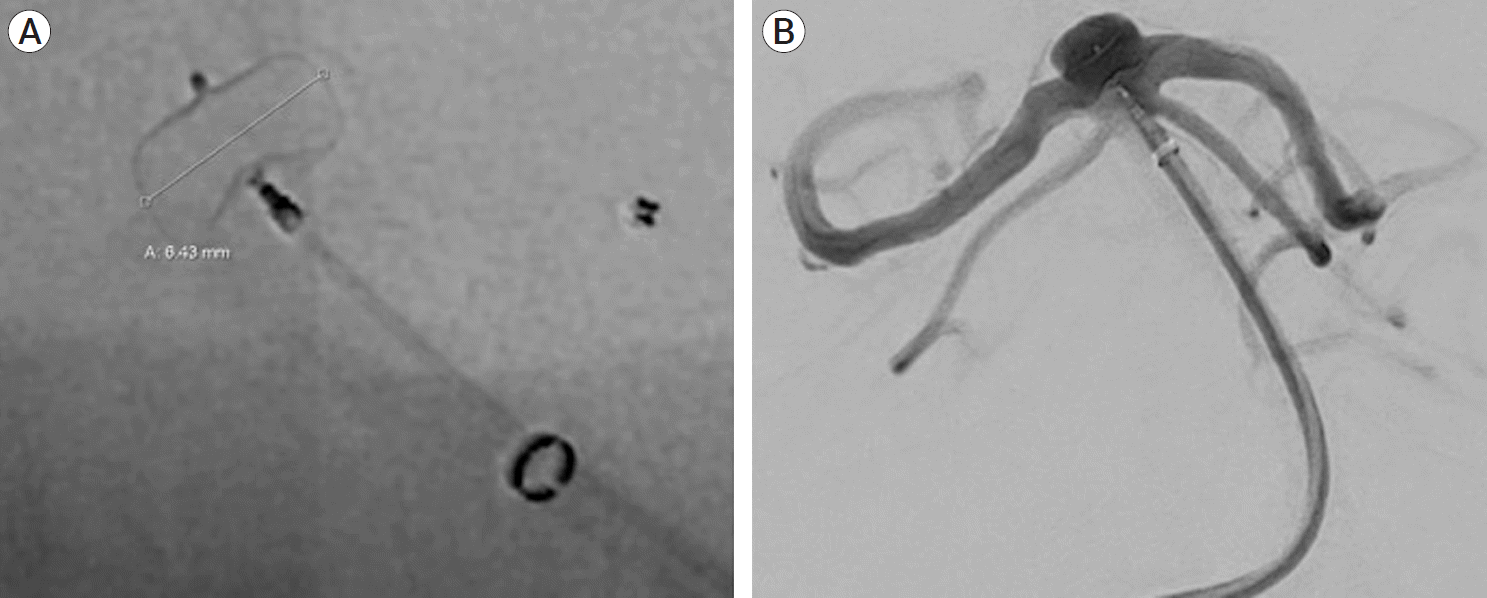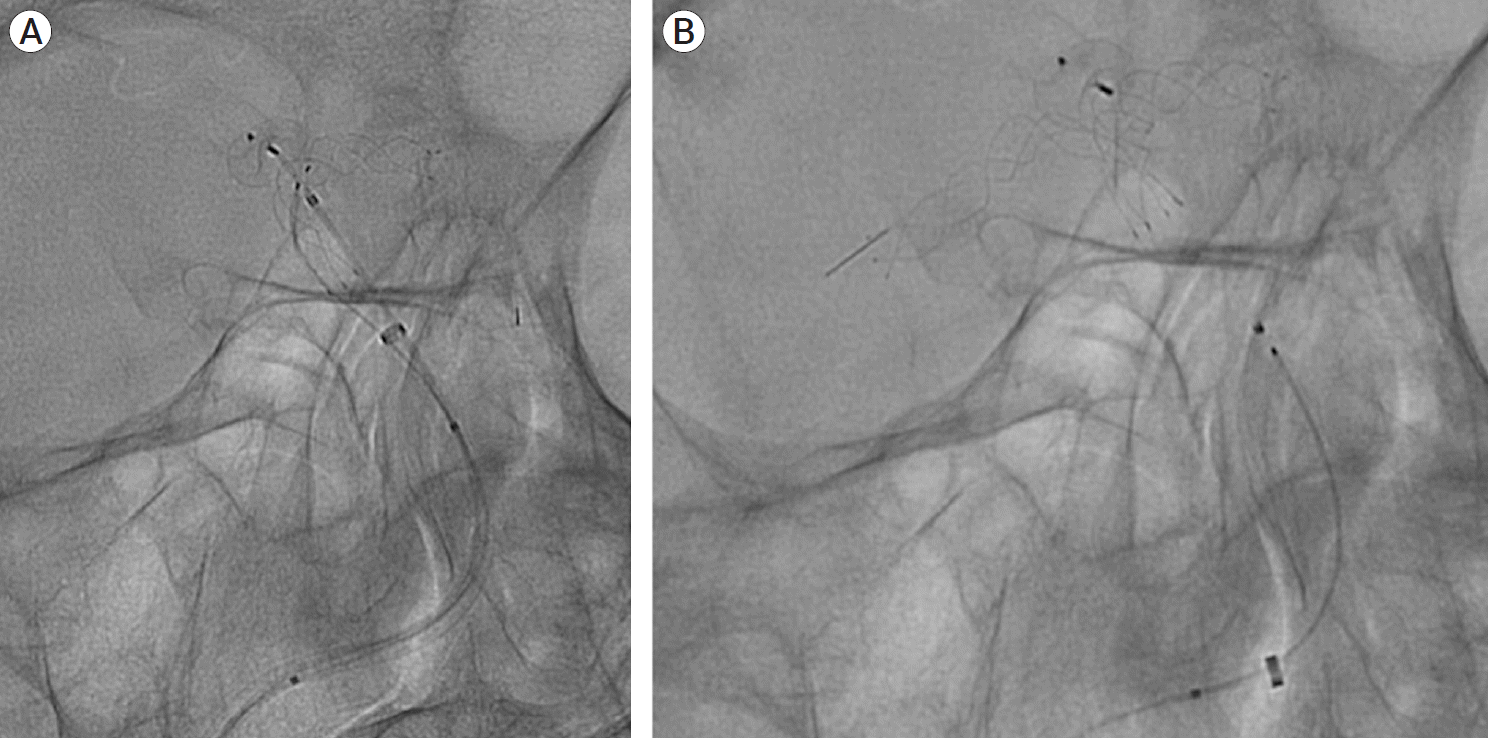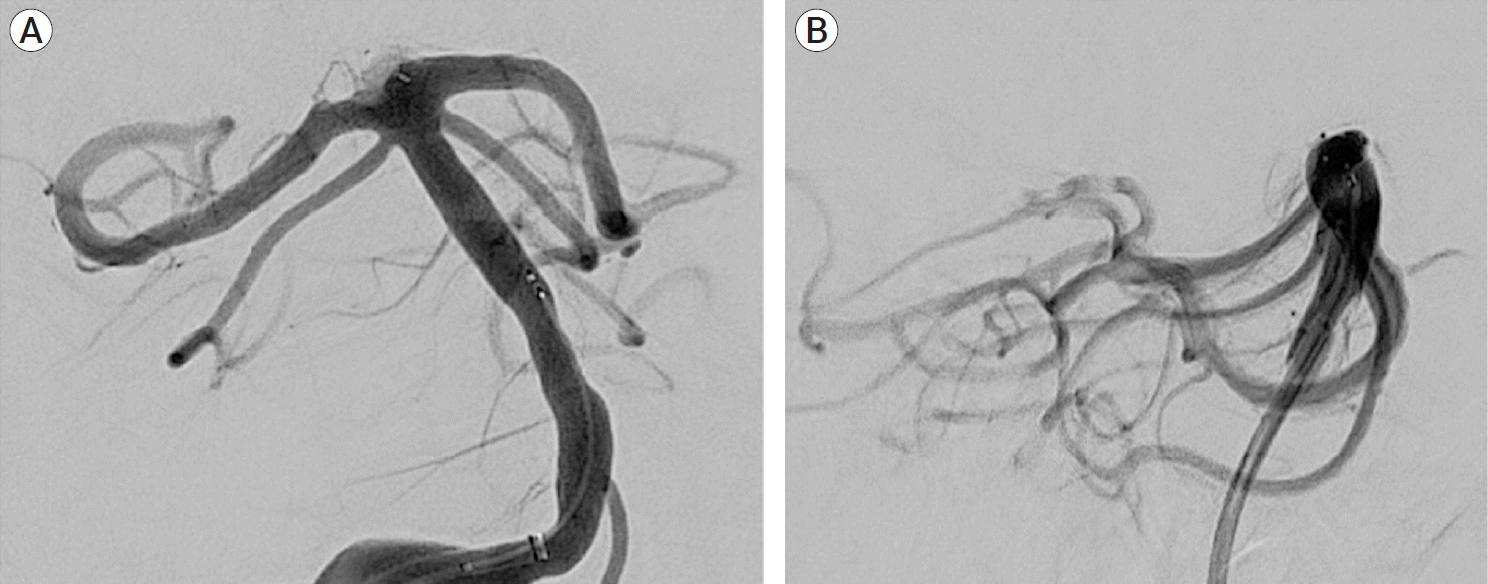1. Abecassis IJ, Sen RD, Barber J, Shetty R, Kelly CM, Ghodke BV, et al. Predictors of recurrence, progression, and retreatment in basilar tip aneurysms: A location-controlled analysis. Oper Neurosurg (Hagerstown). 2019; Apr. 16(4):435–44.

2. Akgul E, Aksungur E, Balli T, Onan B, Yilmaz DM, Bicakci S, et al. Y-stent-assisted coil embolization of wide-neck intracranial aneurysms. A single center experience. Interv Neuroradiol. 2011; Mar. 17(1):36–48.

3. Cagnazzo F, Ahmed R, Dargazanli C, Lefevre P-H, Gascou G, Derraz I, et al. Treatment of wide-neck intracranial aneurysms with the Woven EndoBridge device associated with stenting: A single-center experience. AJNR Am J Neuroradiol. 2019; May. 40(5):820–6.

4. Goertz L, Liebig T, Siebert E, Herzberg M, Neuschmelting H, Borggrefe J, et al. Risk factors of procedural complications related to Woven EndoBridge (WEB) embolization of intracranial aneurysms. Clin Neuroradiol. 2020; Jun. 30(2):297–304.

5. Kan P, Duckworth E, Puri A, Velat G, Wakhloo A. Treatment failure of fetal posterior communicating artery aneurysms with the pipeline embolization device. J Neurointerv Surg. 2016; Sep. 8(9):945–8.

6. Lawson A, Goddard T, Ross S, Tyagi A, Deniz K, Patankar T. Endovascular treatment of cerebral aneurysms using the Woven EndoBridge technique in a single center: Preliminary results. J Neurosurg. 2017; Jan. 126(1):17–28.

7. Lv X, Zhang Y, Jiang W. Systematic review of Woven EndoBridge for wide-necked bifurcation aneurysms: Complications, adequate occlusion rate, morbidity, and mortality. World Neurosurg. 2018; Feb. 110:20–5.

8. Moscato G, Cirillo L, Dall’Olio M, Princiotta C, Simonetti L, Leonardi M. Management of unruptured brain aneurysms: Retrospective analysis of a single centre experience. Neuroradiol J. 2013; Jun. 26(3):315–9.

9. Papagiannaki C, Spelle L, Januel A-C, Benaissa A, Gauvrit J-Y, Costalat V, et al. WEB intrasaccular flow disruptorr—prospective, multicenter experience in 83 patients with 85 aneurysms. AJNR Am J Neuroradiol. 2014; Nov-Dec. 35(11):2106–11.

10. Park H-R, Yoon S-M, Shim J-J, Kim S-H. Waffle-cone technique using solitaire AB stent. J Korean Neurosurg Soc. 2012; Apr. 51(4):222–6.

11. Pierot L, Moret J, Barreau X, Szikora I, Herbreteau D, Turjman F, et al. Safety and efficacy of aneurysm treatment with WEB in the cumulative population of three prospective, multicenter series. J Neurointerv Surg. 2018; Jun. 10(6):553–9.

12. Pierot L, Moret J, Barreau X, Szikora I, Herbreteau D, Turjman F, et al. Aneurysm treatment with Woven EndoBridge in the cumulative population of 3 prospective, multicenter series: 2-year follow-up. Neurosurgery. 2020; Aug. 1. 87(2):357–67.

13. Samaniego EA, Mendez AA, Nguyen TN, Kalousek V, Guerrero WR, Dandapat S, et al. LVIS Jr device for Y-stent-assisted coil embolization of wide-neck intracranial aneurysms: A multicenter experience. Interv Neurol. 2018; Apr. 7(5):271–83.

14. Sekhar LN, Tariq F, Morton RP, Ghodke B, Hallam DK, Barber J, et al. Basilar tip aneurysms: A microsurgical and endovascular contemporary series of 100 patients. Neurosurgery. 2013; Feb. 72(2):284–98.
15. Shima H, Nomura M, Muramatsu N, Sugihara T, Fukui I, Kitamura Y, et al. Embolization of a wide-necked basilar bifurcation aneurysm by double-balloon remodeling using HyperForm compliant balloon catheters. J Clin Neurosci. 2009; Apr. 16(4):560–2.

16. van der Kolk NM, Algra A, Rinkel GJE. Risk of aneurysm rupture at intracranial arterial bifurcations. Cerebrovasc Dis. 2010; 30(1):29–35.

17. Zhang S-M, Liu L-X, Ren P-W, Xie X-D, Miao J. Effectiveness, safety and risk factors of Woven EndoBridge device in the treatment of wide-neck intracranial aneurysms: Systematic review and meta-analysis. World Neurosurg. 2020; Apr. 136:e1–23.







 PDF
PDF Citation
Citation Print
Print





 XML Download
XML Download